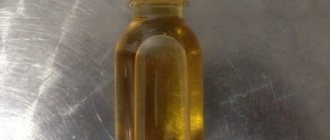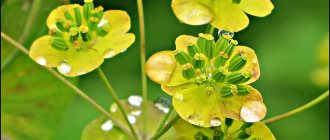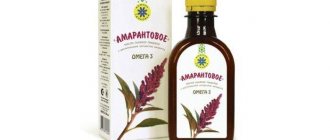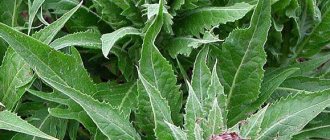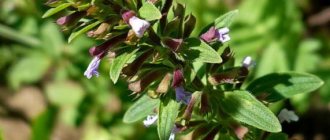In meadows, forest edges and clearings of central Russia, the Urals, Altai, the Far East, Kamchatka and Sakhalin in June - July, a tall plant (up to 80 cm) with a beautiful flower resembling a fluffy white panicle is often found. The flower consists of small flowers with five or six petals, emitting a pleasant smell with the aroma of vanilla, honey, and almonds. The reverse side of the carved leaves is pubescent and soft to the touch.
This beautiful perennial plant is called meadowsweet (common meadowsweet), there are about 15 species. The most common species in Russia are vyazolifolia, six-petalled, ordinary, palmate, and Kamchatka.
The rhizome has a thickening on the roots in the form of small nodules (they are also called nuts).
The plant is unpretentious, so it is in demand when decorating a personal plot.
The beneficial properties of meadowsweet, and absolutely all parts, have been known for a long time, and herbalists always give it a place of honor among other herbs.
Composition and beneficial properties of the plant
Vitamin C improves the condition of the immune system, participates in the restoration of damaged tissue, and has a positive effect on the nervous system.
Flavonoids help relieve inflammation, resist viruses, improve the flow of bile, relieve spasms, have an anticarcinogenic, antioxidant, diuretic effect, and promote the healing of ulcers.
Tannins have an antioxidant, astringent effect and help stop bleeding.
Salicylic acid relieves inflammation and reduces tissue swelling.
Phenol compounds stimulate the functioning of the kidneys and gall bladder, improve the functioning of the immune system, act as an antiseptic, antispasmodic, and have a diuretic effect.
Phenolcarboxylic acids improve the functioning of the liver and gallbladder, kidneys, and relieve inflammation.
Catechins are involved in neutralizing free radicals and have an antibacterial effect.
Essential oils participate in the normalization of the gastrointestinal tract, have an antitussive effect, and improve heart function.
Starch has an enveloping effect and saturates with energy.
Glycosides give a laxative, diuretic effect, calm the nervous system, dilate blood vessels, and have an antimicrobial effect.
Fatty acids normalize metabolism and cell restoration.
Wax has an astringent and bactericidal effect.
Description and chemical composition of meadowsweet
Since meadowsweet grows almost everywhere - in forest clearings, meadows and river banks - it is not difficult to recognize the plant shown in the photo. The stem can reach one and a half meters in height, the leaves are very similar to the foliage of an elm (hence the name), and lush inflorescences with a strong honey scent bloom all summer.
Meadowsweet and its beneficial properties have long been known. It is mentioned in literary works as a plant used in Druid rites. There are many recipes for traditional medicine that use all parts of meadowsweet, and since 1984, meadowsweet has been included in the Pharmacopoeia and is recognized as official medicine.
This popularity is based on the valuable chemical composition of the plant. The main active ingredient of meadowsweet preparations is salicylic acid , from which the well-known aspirin is obtained. In addition to it, the leaves, flowers and stems of the plant contain:
- Ascorbic acid is an important participant in biochemical processes in the body. Vitamin C is responsible for the immune system, metabolism and overall health.
- Tannins , depending on the concentration, have an astringent or irritating effect on the mucous membranes. Used as a hemostatic and anti-inflammatory agent.
- Phenolic compounds (spirein and others) have a wide range of properties. They strengthen the immune system, increasing the body's defenses, effectively stop bleeding, relieve spasms and inflammation. The diuretic, antiseptic and sedative effects of spirein are also known.
- Flavonoids are valued for their high antiviral activity, antioxidant, antitumor and many other beneficial properties.
- Essential oils , which meadowsweet inflorescences are rich in, perfectly disinfect, relieve inflammation and soothe.
- Catechins , found in large quantities in meadowsweet, are powerful antioxidant compounds. They prevent the development of various types of malignant tumors and slow down the aging of the body.
The leaves, rhizomes and inflorescences of the meadowsweet also contain starch, valuable fatty and phenolcarboxylic acids, as well as glycosides.
Indications for use of meadowsweet
Substances in the composition of meadowsweet, the beneficial properties and contraindications of which we are studying, have a pronounced effect, therefore drugs with it are used in the treatment of such pathologies:
- respiratory diseases (bronchitis, pneumonia, bronchial asthma);
- gastrointestinal diseases (intestinal atony, intestinal spasms, dysentery, diarrhea);
- diabetes;
- hypertension;
- epilepsy;
- skin diseases (purulent wounds, psoriasis, herpes, diaper rash, bedsores, boils);
- hepatitis;
- inflammatory processes of the genitourinary system;
- colds;
- joint diseases (arthritis, arthrosis);
- headaches, migraine;
- helminthic infestation;
- angina;
- inflammation of the sciatic, trigeminal, facial nerve.
When meadowsweet should not be used
Not only does meadowsweet have beneficial properties. And there are also contraindications. If they are not taken into account, this can provoke a deterioration in the general condition of the body. Contraindications include:
- individual intolerance;
- tendency to constipation (astringent properties will aggravate the situation);
- low pressure;
- low platelet count (may cause bleeding);
- pregnancy.
To avoid unwanted situations, you need to consult a doctor.
Application of meadowsweet roots and rhizomes
A distinctive feature of the underground part of meadowsweet is the high content of tannins.
A powder is made from the roots and used in decoctions, infusions and tinctures, and teas.
The use of meadowsweet roots in preparations helps:
- for bleeding (accelerates the process of blood clotting);
- reducing pain from rheumatism, gout;
- reduce body temperature;
- normalize the functioning of the nervous system;
- with helminthic infestation;
- in the prevention of thrombophlebitis;
- during the recovery period after a heart attack;
- in the treatment of pustular skin diseases.
An ointment for arthritis and rheumatic pain is prepared as follows: 25 g of root, ground into powder, mixed with 100 g of butter (butter) or petroleum jelly, rubbed into the sore spot, and wrapped.
A decoction of the roots for recovery after a heart attack can be prepared as follows. Using a water bath, infuse 20 g of roots in one liter of water (15-20 minutes). Drink 50 ml four times a day.
Can be used in compresses for purulent skin diseases.
Ointment for burns and ulcers: leave root powder (1 part) and vegetable oil (5 parts) for 12 hours, squeeze out, apply a compress for 6-7 hours. Before mixing, sterilize the oil in a bottle (in water over low heat).
Types of meadowsweet and their uses
Meadowsweet is grown as an ornamental plant to decorate gardens or flower beds. Only 4 varieties are suitable for medicinal purposes: vyazolistny, six-petaled, Kamchatka and palmate. Varieties of this herb are easily distinguished by the shape of the leaves, the size and color of the flowers.
Meadowsweet six-petalled (common)
Common meadowsweet is one of the most useful species. An adult plant does not exceed 60-80 cm in height, and has a developed rhizome with tubers. It can be found in well-lit areas: in meadows and roadsides, and the grass can also grow on forest edges. The flowers form paniculate inflorescences with a white tint and a pronounced scent.
This type of meadowsweet is used for medicinal purposes. Infusions and decoctions are prepared from its root, leaves and dried flowers. Such remedies help with various pathologies:
- chronic inflammatory diseases of the gastrointestinal tract;
- diseases of the kidneys and urinary system (meadowsweet has a diuretic effect);
- arthritis, arthrosis, joint pain of various origins;
- decoction of rhizomes - for washing wounds from bites of poisonous animals and insects.
Common meadowsweet is a rather rare species. However, it has the most pronounced medicinal properties and has found application in official medicine.
Meadowsweet
Meadowsweet is the most common variety. It is a tall herbaceous plant, can reach up to 150 cm. Its natural habitat is forest thickets, the banks of swamps and reservoirs. This species is also used in folk medicine and is included in official preparations. It has a pronounced anticonvulsant, antibacterial and anti-inflammatory effect and can be used for a number of diseases:
- disorders of the heart and blood vessels, especially hypertension;
- nervous system disorders;
- dermatological problems, including burns, ulcers, diaper rash and dermatitis of any origin;
- any inflammatory pathologies of internal organs;
- colds.
Winter apple tree Welsey is a champion in terms of yield and keeping quality of fruits
From the photo, meadowsweet can be easily distinguished from ordinary meadowsweet. This plant is larger, has a straight, strong stem and feathery leaves. The inflorescences have a white tint, but they are larger and more lush.
Meadowsweet Elegans
The meadowsweet variety Elegance is distinguished by its bright decorative inflorescences, painted in a purple hue. These are bushes of medium height (50-100 cm) with original palmate leaves. They grow quickly, so they can be used to create flower arrays or hedges. Meadowsweet can also be added to bouquets, but more often it is planted in open ground.
This variety is popular for home breeding for several reasons:
- unpretentiousness to living conditions - plants tolerate temperature changes well and adapt to weather conditions;
- duration of flowering - the period lasts throughout the summer;
- the ability to endure the winter in open ground without shelter.
Photos of meadowsweet Elegance will be different. The shades of the flowers vary from soft pink to bright crimson, and the height of the plant also differs. This depends not only on the growing conditions, but also on the method of reproduction - individuals grown from seeds are smaller and weaker.
Variety Captivity
Meadowsweet Plena are low ornamental plants that can reach up to 40 cm. They are popular in landscape design due to their spectacular appearance and ease of care. This variety adapts well both in the shade of trees or taller shrubs and in open areas. It is popular for decorating flower beds, creating lush floral arrays and low decorative borders.
At the end of May or beginning of June, flower stalks up to 15 cm in length appear on each bush. They bear lush white inflorescences, which consist of flowers about 1 cm in diameter. The flowering period lasts at least a month.
Red meadowsweet Venusta
Meadowsweet Venusta is one of the largest varieties. Adult bushes can reach up to 2.5 m in height and are distinguished by a particularly strong stem and developed rhizome. The flowers are collected in lush inflorescences and acquire various shades of pink. Meadowsweet begins to bloom in early summer, but retains its decorative appearance until the first frost due to the unusual shape of the leaves. They are large, five- or seven-lobed.
Red meadowsweet is a wild plant. It can be found everywhere: in the forest-steppe zone, on the banks of rivers and reservoirs. In landscape design, these flowers are popular when creating hedges, landscaping adjacent areas and recreation areas.
Bushes can be planted both in open areas and in the shade of trees and in mixed plantings with larger plants. However, severe darkening can lead to loss of flowering.
Uses of seeds and flowers
During the cold season, it is important how colds are prevented. For preventive purposes, meadowsweet inflorescences are used in an infusion.
Meadowsweet flowers strengthen the immune system and have an antimicrobial effect, therefore they are successfully used in the prevention of influenza and acute respiratory infections.
The infusion of flowers is prepared as follows. Fill a jar (500 ml) tightly with flowers to half the volume, fill with cold water, leave for 12 hours. To preserve the infusion, add 25 g of calendula tincture (pharmaceutical). Add to tea, fruit drink, compote.
Ointment for psoriasis: mix 10 g of crushed flowers well with 40 g of Vaseline, rub into problem areas.
Tincture of meadowsweet seeds after a stroke: keep 100 g of vodka and 2 teaspoons of seeds without access to light for 10 days, take 2 teaspoons with meals.
Meadowsweet herb: medicinal properties
The leaves and stems of meadowsweet contain ascorbic acid in large quantities, so the herb is used:
- to restore the functioning of the nervous system (insomnia, fatigue);
- to increase the protective functions of the body;
- for diaper rash (powder).
In these cases, it is useful to use a herbal infusion: 250 ml of boiled water at room temperature and 1 tsp. Leave the herbs for 8 hours, drink half a glass before meals four times a day.
The infusion is used for compresses (ulcers, wounds), to strengthen hair (rinsing hair after washing).
Tea
Meadowsweet tea strengthens the immune system, prevents diseases during the cold season, reduces stomach pain, relieves irritation:
- 2 tbsp. Soak spoons of meadowsweet for no more than 15 minutes in a liter of boiling water, drink with honey throughout the day;
- Brew a teaspoon of meadowsweet flowers in 250 ml of boiling water for five minutes.
Meadowsweet grass and flowers can be added to various teas (green and black, fireweed) and consumed for preventive purposes in the cold season, hot or warm with the addition of honey.
Cooking recipes
Traditional medicine uses all parts of meadowsweet. Each of them helps with a specific disease. The plant has an immunostimulating effect and strengthens the body as a whole. Due to its anti-carcinogenic properties, the plant fights various types of tumors, reducing their size. A decoction prepared from the rhizome is indicated for cancer, but only along with drug therapy. There are different herbal remedies. It can be a decoction, infusion, tea, ointment or tincture, which are prepared using a special technology.
Decoction
A decoction of meadowsweet will help eliminate the symptoms of respiratory diseases literally within a day. It also has antiparasitic properties. For gastrointestinal disorders, the product can be used for cleansing enemas. Externally, the decoction helps with boils, ulcers and ulcers. The product is easy to prepare, so the process will not take much time. You will need:
- 1 tsp meadowsweet flowers or roots;
- 480 ml boiling water.
Hyssop: medicinal properties and contraindications, use in folk medicine
The flowers must first be crushed and poured into a glass container. Further preparation steps are as follows:
- Pour boiling water over it, then heat for half an hour in a water bath.
- Let it cool a little, strain off the sediment and add water to the original level, because some of it will evaporate.
- Take the product orally, 15 ml up to 3 times throughout the day.
Infusion
The infusion is prepared a little easier - simply pour boiling water over a certain amount of herb, and then leave it for a couple of hours or days, depending on the recipe. For such a remedy you will need meadowsweet roots. In the form of an infusion, they help with joint diseases and even oncology. The product is prepared according to the following instructions:
- Take 1 teaspoon of meadowsweet root powder.
- Next, pour a glass of boiling water over it, cover with a lid, and leave for 8-10 hours. You can wrap yourself in something warm.
- After the specified time, strain the infusion. Drink the product throughout the day, consuming half a glass.
Tea
Meadowsweet tea not only quenches thirst, but also fills the body with natural minerals and vitamins. It brings particular benefits in combination with honey. In this case, the medicinal properties of meadowsweet are more fully manifested. Making herbal tea is very simple:
- Take about 50 g of fresh meadowsweet flowers and place them in a saucepan.
- Then add 1 liter of water and bring to a boil.
- Simmer for 10 minutes, then cool.
- When the tea has cooled, strain, then add a couple of tablespoons of honey to taste.
Ointment
To treat wounds, especially those that do not heal for a long time, it is more convenient to use meadowsweet in the form of an ointment. To make it, the rhizomes of the plant are often used. In addition to them, you will need 100 g of regular Vaseline. It needs to be mixed with 3-4 tsp. meadowsweet rhizomes, which were previously crushed. The prepared composition is lubricated on damaged areas several times a day. Another option is to apply a bandage or gauze with a small amount of ointment to the wound.
- Description of wild rosemary with photos - medicinal properties of the plant, indications for use and reviews
- Why lemon balm is useful for the human body - use in folk medicine, cooking and cosmetology
- Medicinal properties and contraindications of White clover - composition, use in folk medicine
Tincture
This type of remedy is prepared with alcohol or vodka. Meadowsweet tincture can be used as a medicine for headaches, rheumatism and neuralgia. To prepare the product you will need the herb itself and vodka, taken in a ratio of 1:5. It is better to chop the meadowsweet first. Then all that remains is to fill it with vodka and send it to steep in a dark, cool place for 5 days. The prepared tincture is used externally in the form of a lotion on sore spots.
Tincture
Meadowsweet tincture is always prepared using an alcohol-containing component. It could be alcohol, vodka, wine.
Alcohol tincture (diabetes, gastritis, stomach ulcers, cholecystitis, gout, joint inflammation):
- one liter of vodka (alcohol);
- 50 g flowers;
- 20 g granulated sugar.
Keep the composition in a cool and dark place for two weeks. Dosage: teaspoon three times a day before meals. Duration of treatment is from 21 days to 30 days.
Tincture for compresses: leave 1 part of crushed meadowsweet and 5 parts of vodka for five days.
The tincture is not recommended for use by people with alcohol dependence or with inflammatory processes in the liver.
Water tincture (high blood pressure):
- 1 tbsp. spoon of meadowsweet leaves;
- two glasses of boiling water.
Leave the mixture wrapped for 15 minutes, drink a teaspoon before meals.
Contraindications
Before you start using medications based on meadowsweet or meadowsweet, you need to familiarize yourself with the list of contraindications:
- chronic constipation and predisposition to it;
- hypotension (low blood pressure);
- thrombocytopathy (reduced blood clotting);
- colitis;
- increased sensitivity to meadowsweet components;
- pregnancy and lactation;
- stomach ulcer;
- gastritis;
- children's age (up to 12 years).
Meadowsweet oil is especially popular due to its healing properties. Contraindications for its use depend on the presence of chronic diseases. This drug is strictly prohibited if you have gallstones. Oil can cause them to move.
Meadowsweet: traditional medicine recipes
Herbalists believe that meadowsweet helps against forty diseases and the range of its uses is quite diverse.
Let's look at some recipes.
An infusion can be prepared from meadowsweet for tumors of various etiologies, bleeding, and convulsions. Infuse 2 teaspoons of roots in a glass of water for 35 minutes in a water bath. Take 50 ml before meals three times a day.
Infusion for diarrhea: leave for 10 minutes, 1 tbsp. a spoonful of roots in a glass of boiling water (preferably in a water bath). Reception - four times a day, 1 tbsp. spoon before meals.
Tincture for neurasthenia, atherosclerosis, stroke, epilepsy, Alzheimer's disease, rheumatism: leave for 14 days, 5 tbsp. l. flowers (or 2 tbsp. roots) in 100 ml of vodka. Drink 15 drops of tincture in a spoon of water twice a day after meals.
Compresses for radiculitis, lumbago, arthritis, etc. can be made as follows: the herb wrapped in gauze, kept in boiling water for half a minute, kept on the sore spot for 1-8 hours.
Folk recipes
Mix 2 tablespoons of root powder, crushed green part of the plant and 100 grams of fat base (butter, sea buckthorn, olive oil, lanolin, petroleum jelly) and store in a glass or porcelain container. At 2-8 degrees Celsius, in the dark, such an ointment retains its healing properties for a year.
Ointment for joint pain This ointment is applied to rheumatoid joints and tumors after bruises. The procedure can be performed 3-4 times a day.
Ointment for insect bites, boils
An ointment of root powder and oil, prepared as in the previous recipe, is applied to the damaged area. In the summer, you can use fresh raw materials. 1 part of the juice squeezed from flowers is mixed with 3 parts of any fat base (butter, goose fat, lard).
Ointment To lubricate flaky areas of skin, you can use ointments containing cosmetic (pharmacy) Vaseline. At the same time, the amount of raw materials increases. Powdered roots (grass) are mixed with the same amount of Vaseline. The ointment is used (2-3 times a day).
Everyone understands that it is impossible to extract real oil from a plant at home. Too many raw materials and industrial equipment are required for this. But if you simply place 10 tablespoons of meadowsweet flower powder in 0.5 liters of high-quality vegetable oil and leave in a tightly closed container for several days, the remedy for eliminating acne, seborrhea, and dermatitis will be ready.
The resulting oil also has wound-healing and antiseptic properties.
Oil for burns
Mix 1 part root powder into 5 parts vegetable oil. Leave for about half a day in a warm, dark place. Strain. A sterile gauze napkin is soaked in ointment and placed on the affected area, and fixed with a bandage. Repeat at intervals 2 times a day.
Infusions and decoctions are usually used at 5 and 10%.
Meadowsweet root powder
Infusion for diabetes
Prepared from dried and crushed roots. Take approximately 6 g of raw materials, pour 300 ml of boiling water, preferably in a thermos. For further infusion, the mixture is left for 6-7 hours. If you don’t have a thermos, you can simply wrap the container with the infusion.
Take one tablespoon after meals, for a long time. Be sure to consult with your doctor.
Decoction for hypertension
Boil water in a small thick-walled vessel, add 5 g of dried herb per 0.5 liter. It is better to weigh the grass, since the same volume can have different masses, depending on the degree of grinding. Heat the mixture in a water bath for 30 minutes. The water evaporates.
Then the liquid is cooled, filtered and topped up with boiled water to the previous volume. Drink a tablespoon 3 times a day.
Rinse for tooth cysts
An infusion is prepared for diabetes, only the raw materials are taken 2 times. Rinse 6-8 times during the day, holding the infusion in your mouth for 3-5 minutes.
Alcohol tincture for pain
Vodka tinctures are prepared at 5 and 10% strengths. A tincture of flowers in 70% ethyl alcohol is used in a dilution of 1:10, prescribed as a rub for rheumatic, radiculitis, neuralgic and other pain. Externally, meadowsweet tincture is used for washing wounds, wiping, and compresses.
Infusion of healthy skin of the face and neck
Take 20 g of inflorescences per liter of water and brew it like tea. You can wipe your face, rinse your hair after washing, add it to your bath, or splash it on the stones in the steam room.
Decoction for gynecological diseases
As a decoction for hypertension, as an external remedy for erosion, thrush in the form of baths, tampons.
Tea for stomach problems
For diseases of the gastrointestinal tract, several options for herbal preparations with meadowsweet are used.
The most universal is the following: a teaspoon of dried meadowsweet and yarrow flowers is brewed in 0.5 liters of boiling water. infuse and drink warm with a spoon of honey between meals.
Meadowsweet for women's health
The beneficial properties of meadowsweet are also used in gynecology.
Decoction for douching (hemorrhoids, mastopathy, endometriosis, thrush, erosion): stir 6-7 teaspoons of meadowsweet (roots, flowers) in water (1 liter), keep in a water bath for 30 minutes, strain well through two layers of gauze. Douche with warm broth up to three times a day.
Infusion for the treatment of infertility: take equal parts of meadowsweet, linden, clover flowers, chop, 3 tbsp. Infuse spoonfuls of the mixture in a liter of boiling water for three hours. Take 1 glass before meals three times a day.
Beneficial properties of meadowsweet rhizomes and preparations from them
Meadowsweet (meadowsweet) has been used by official medicine for a long time. The main place is occupied by the use of inflorescences, however, the use of rhizomes has found its place in the creation of herbal dosage forms (plant extracts), as well as in folk recipes for the treatment of diseases.
Marbled pear: description, photos, reviews, pollinators
The underground part of the plant is used to relieve nervous tension. Rhizomes can significantly reduce blood pressure, and therefore are used in the treatment of hypertension. Meadowsweet is included in preparations as a natural anticonvulsant component, effective in the treatment of epilepsy.
Rhizome preparations have hemostatic, analgesic, and anti-inflammatory properties. They are used in the complex treatment of gout, rheumatism, and to eliminate inflammation in the kidneys and bladder. Also, infusions and decoctions of rhizomes effectively eliminate inflammation in the mucous membrane of the gastrointestinal tract (GIT), normalize digestion, and are taken for dysentery and pancreatitis.
Decoction
Peculiarities. A decoction of rhizomes prepared according to this recipe is taken orally for the diseases listed above, and can also be used for douching in the treatment of inflammatory diseases of the reproductive organs. In the second case, the amount of brewed raw material is increased to 25 g.
Preparation and use
- A teaspoon of raw material is poured with two glasses of boiling water.
- Place the mixture in a boiling water bath for half an hour.
- After heating, the mixture is filtered and brought to the original volume with boiled water.
- You need to drink meadowsweet (meadowsweet) in the form of a decoction, one tablespoon three times a day.
Infusion
Peculiarities. In addition to the indications for use listed above, the infusion is used to reduce blood sugar levels and eliminate elevated cholesterol levels.
Preparation and use
- Drinking water is brought to a boil and cooled to room temperature.
- A teaspoon of crushed dry rhizomes is poured with a cup of boiled water.
- Infuse the mixture all night (at least eight hours).
- In the morning, filter, take the entire volume per day, in small sips.
Ointment
Peculiarities. Used to eliminate rheumatic pain, as well as to treat infectious and inflammatory skin lesions.
Preparation and use
- 20 g of powder prepared from dried rhizomes must be mixed with 90 g of ointment base: petroleum jelly, lanolin, or, if they are absent, with the same amount of butter.
- Rub into sore spots up to four times a day.
Rich decoction
Peculiarities. Taken orally for malignant tumors, as a detoxifying, analgesic, sedative and hemostatic, antitumor agent.
Preparation and use
- A couple of teaspoons of dried crushed tubers are poured into 300 ml of boiling water.
- The mixture is placed in a water bath for half an hour.
- After cooling for ten minutes, the broth is filtered.
- Take a quarter glass orally, three times a day, before meals.
